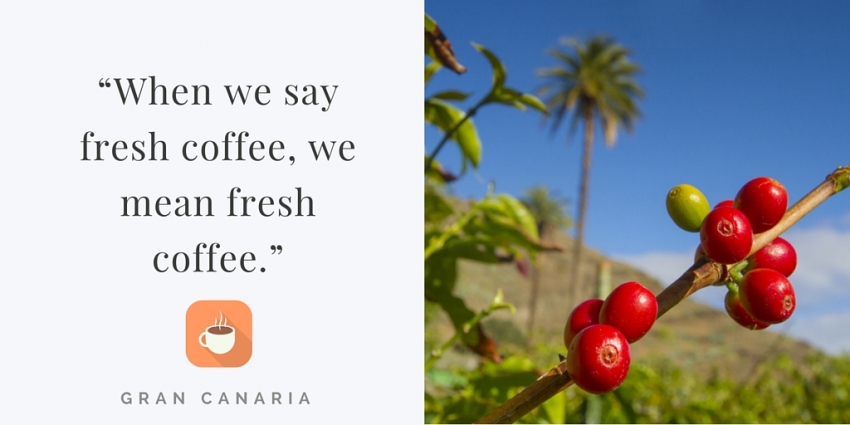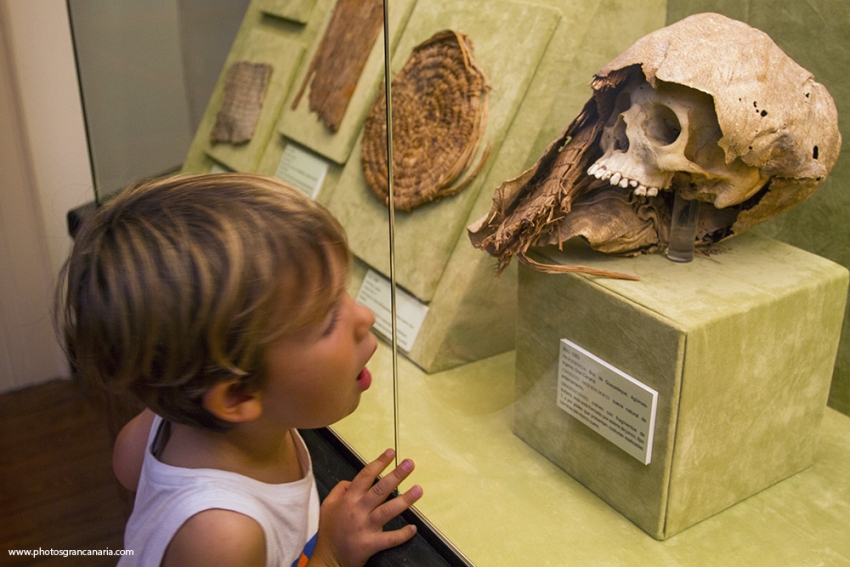Lex says: In the 18th Century it was easier to sail to Tenerife from Agaete than to get to Las Palmas.
The plants growing in Agaete today are direct descendants of these early plants: Arabica bushes with low yields but great-tasting beans. In most places, newer varieties have taken over but flavour has lost out to yield.
As a cash crop coffee never took off in Gran Canaria but the plants took their place in the Valley's mixed orchards alongside avocados, mangos, custard apples and loquats.
Perfect Conditions
Unwittingly Agaete farmers provided their coffee with exactly what modern coffee gourmets say are the perfect conditions: High shade, dappled light, rich soils and no chemicals.
Alex says: While it's said that Agaete coffee is Europe's only crop it's more accurate to describe it coffee as the most northerly coffee crop in the world.
Agaete's coffee bushes are consequently big chunky things with lots of leaves: They get so thick that the pickers disappear completely as they bend down for the lowest cherries. The odd rustle and an occasional indignant blackbird are the only sign that the harvest is underway.
The harvest grows every year as more and more locals plant coffee bushes on their terraces. At 70 euros per kilo, every bean is worth picking and carrying down to the cooperative. Agaete's coffee growers range from farms that produce hundreds of kilos per year to little old ladies with a couple of bushes under their mango tree.
Colourful crop
Coffee is a multicoloured crop. The delicate creamy flowers give way to tiny but intensely green fruits. These swell and turn yellow and they a bright, blood-like scarlet. Once picked and laid out to dry they turn coffee-brown. But here the beans get ahead of themselves as the dried skin has to go. After hulling the beans are almost white. It's not until they are roasted that they turn brown and smell like coffee.
Hard Work!
If the price makes you want to drop everything and become a coffee farmer, then think twice: Coffee bushes are awkward things. The cherries ripen a few at a time and have to be picked before they ferment and spoil. The beans grow from ground level up to ten feet in the air. On the small fields and terraces of the Valley, every cherry has to be hand-picked.
It's hard, sweaty work and by the time you pick the last one in a row of bushes another lot have ripened behind you.
After drying and hulling and removing the sheath from each bean, you're left with less than half the weight you picked. Roasting knocks off some more and so does grinding. It takes seven kilos of fresh coffee cherries to produce one kilo of ground coffee.
But it's Good Stuff
Agaete coffee is rich with chocolate and liquorice notes but also a fresh, almost grass-like taste: The flavour balance depends on the roasting time.
The best way to appreciate the flavours is to drink it as a black espresso. Adding sugar and milk dilutes the taste. Try local coffee in the little cafe in the corner of the Huerto de las Flores garden in Agaete itself, or visit a coffee farm in the Valley.














